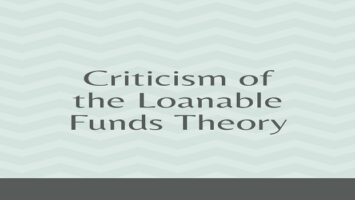Meaning of Economic Stability and Instability:
In the first place, it is necessary to understand what is meant by economic stability and how deviations are caused therefrom. By economic stability, we understand the maintenance of full employment at stable prices. Economic instability implies a departure from full employment at stable prices. The important condition for full employment and stability in price level is given by keyness as when savings are equal to the investment, i.e., S = I; when savings exceed investment, (i.e., S > I), there would be a recession, which would eventually give way to depression. In the opposite case, in which investments exceed savings, (i.e., I > S), then there would be inflation. These booms and depressions have been a characteristic feature for more than a century of most of the capitalistic economies. A period of rising prices and business prosperity, i.e., inflation is followed by a period of falling prices and business losses and unemployment, i.e. deflation. The cycle moves from prosperity to depression and back again, not in a uniform span of time nor with a uniform degree of intensity.
These fluctuations upset and dislocate the economy and cause great hardships to a large number of people. Rising prices bring hardships to the fixed-income group of people. Falling prices result in business losses, even ruining it and creating widespread unemployment. Thus, the problem of instability was not of inflation or depression in itself but of fluctuations from one side to the other from the full employment level. It is now an accepted view that it is the responsibility of the State to regulate the money flows in the economy so as to offset these fluctuations and maintain economic stability.
Unemployment is the Characteristic Feature of Instability- Unemployment is one of the principal indicators of economic disorganization. It emerges only when there is some sort of maladjustment or disorder between the different factors of production. It is the most unpleasant thing in an economy, as it brings misery and suffering, and moral degradation to the people who become its victim. Therefore, it is the responsibility of the state to achieve and maintain the situation of full employment and to prevent and remove a situation of unemployment in the economy as far as possible. Keynes-Genral Theory of Employment Interest and Money explains the cause of unemployment and how the situation fo full-employment can be achieved. Here, we are not concerned with the details of the theory, but with the role of public expenditure in determining the volume of employment and in achieving full employment.









Comments (No)